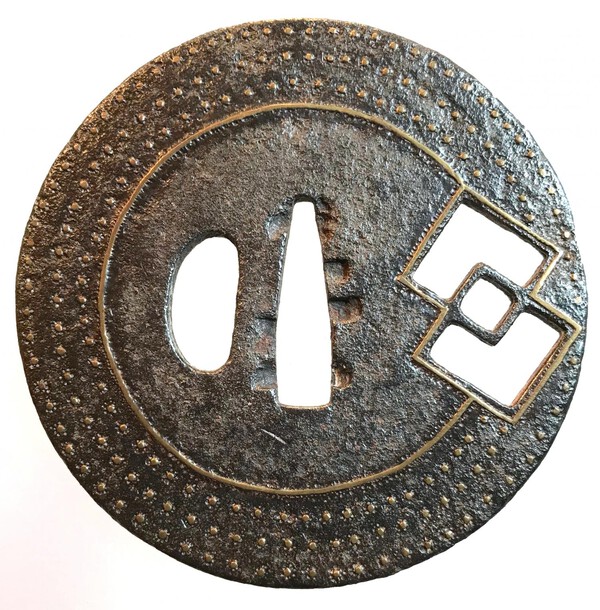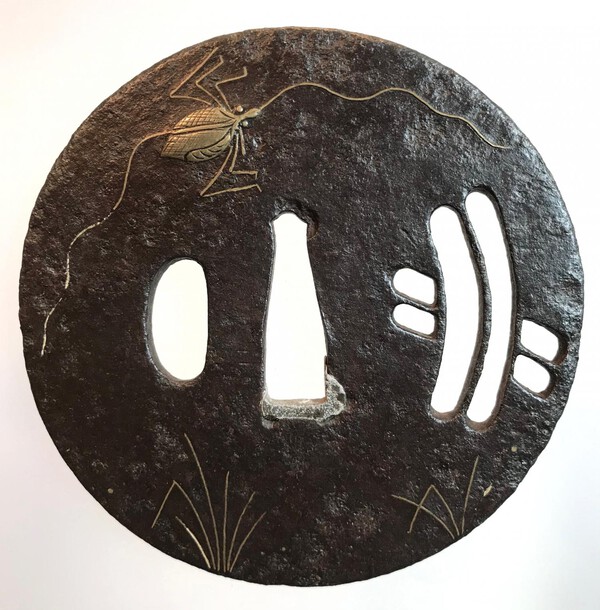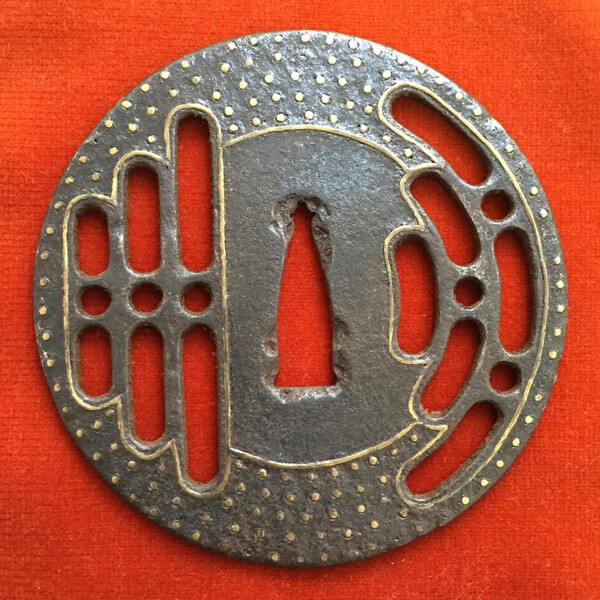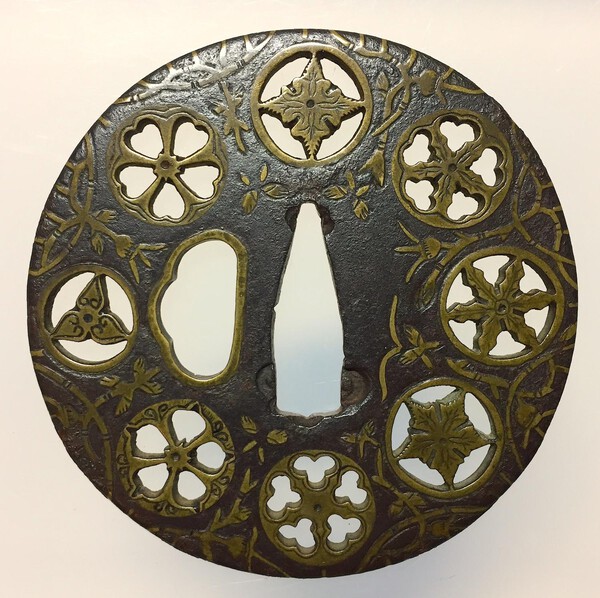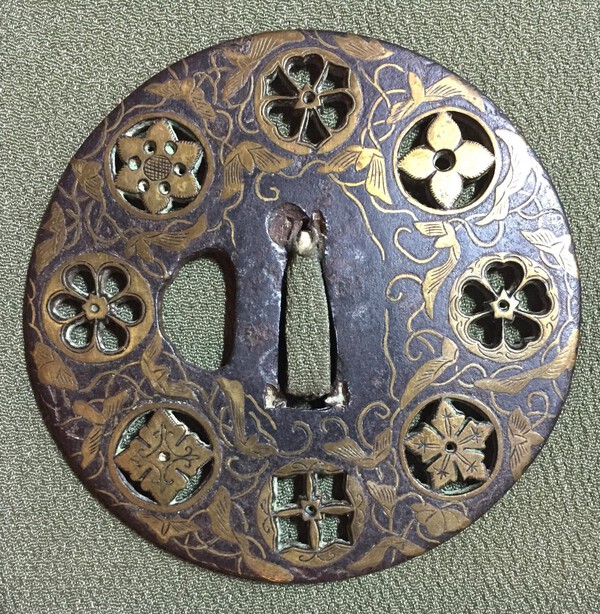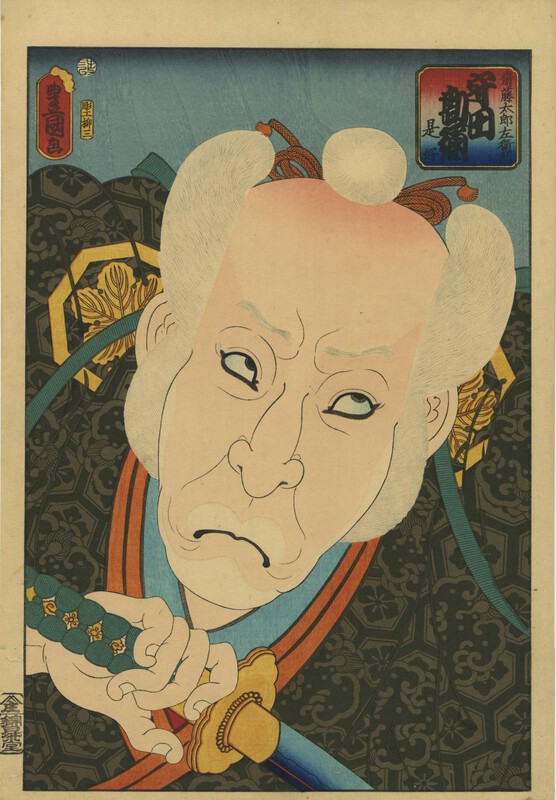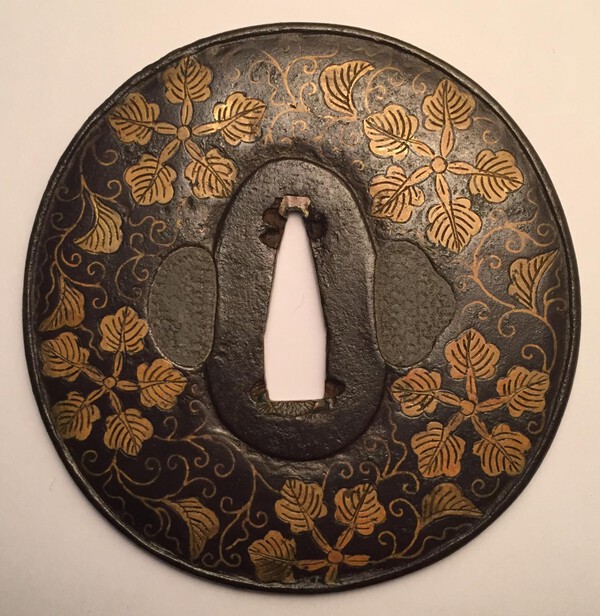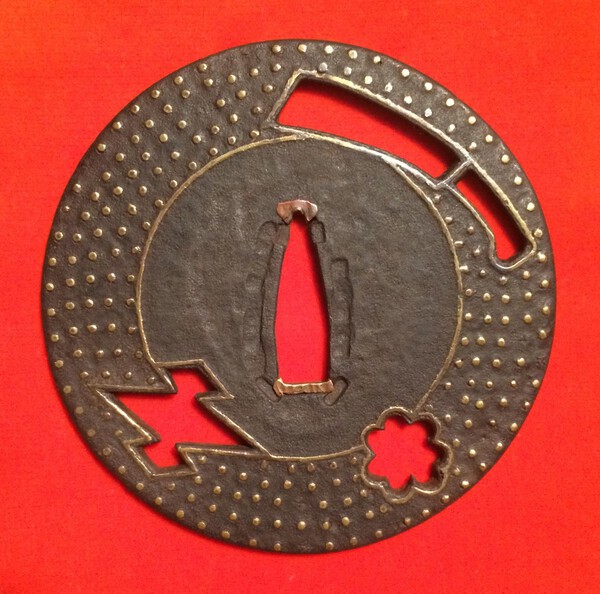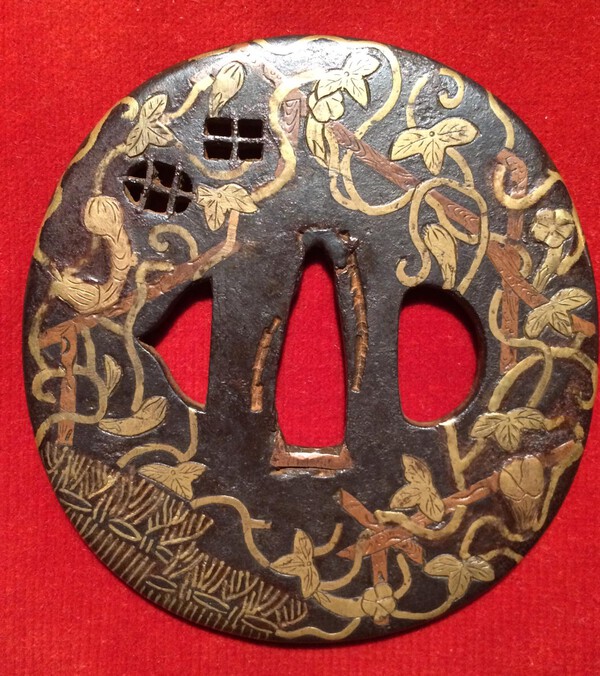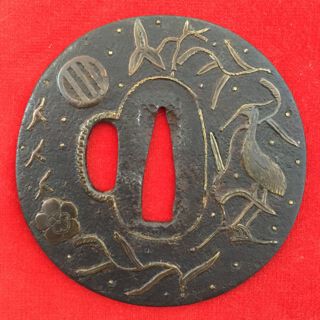-
Posts
172 -
Joined
-
Last visited
Everything posted by svarsh
-
Morning Uwe (evening in San Francisco, and a happy new year!) Seems like this piece belonged to you before:-). Google translate gives Yawata for the kanji. However, it is Hachiman, the God of War (God of Eight Banners). Interesting. That's the auction house description: Iron with inlays of brass. In hira-zogan technique with kebori engraving eight different family emblems (mon). An old inscription is dedicated to the deity Hachiman. Best wishes, Sergei
-
Recently I acquired a tsuba with was listed by seller as mumei, however, I found something on seppa-dai which may be a signature. Please help to decipher. Thanks. Sergei
-
Thank you, Malcolm and Kissakai/Grev.
-
I wonder if anyone knows meaning of two overlapping lozenges (as pictured). It's most probably a kamon, but what clan? So far, I found two explanations: (1) kuginuki (nail extractor = penetrated nine castles) and (2) Chigai bishi - with no meaning provided. And another enigma: The bug stands for bug, but what these ko-sukashi bars stand for? An insight would be greatly appreciated. Sergei
-
Morse code was the first suggestion that arrived to me over Facebook. The latest explanation acquired from my friend in London is: a butterfly on the left and a dragonfly on the right. Seems logical.
-
Can this be a horseshoe crab? http://www.exploringnature.org/graphics/horseshoe_crab_diagram72_color.jpg
-
Bruno, butterflies is a possibility. But may be something else. It would be great to find similar/likely design in any form and age, already explained by an authority. Or just brainstorm!
-
What is this tsuba about? What the motif? I have no idea... Help would be very much appreciated. Sergei
-
Thank you, Marius. Yes, what do you think about these tsuba? How do you judge whether it good? And how old? Besides 'good' and 'old' questions (which are important!), may be anyone knows what are the mons? Which families? Or whether it mons or just symbols, flowers, geometry, just beautiful elements to make the sword nicer/cooler? Sergei
-
Henry and Ken, I know both sources, mentioned by you. Anyway, thanks.
-
I have two Yoshiro-style tsubas, and would like to learn more about them and the school. I saw a few discussions here (http://www.militaria.co.za/nmb/topic/9268-yoshiro-school-tsuba-opinions/) and here (http://www.militaria.co.za/nmb/topic/12912-a-yoshiro-mon-tsuba/), and also looked at http://tsuba.jyuluck-do.com/YoshiroShikiShinchuZoganTsuba.html. Still would like to collect opinions from the fellow tsuba lovers. Sergei
-
I found the mulberry leaf mon (kaji) on tsuba and actor's kimono. Would the members be kind enough to tell me what clan it belonged to and if there were any particular meanings of the symbol? Thank you,s Sergei
-
Thank you!
-
-
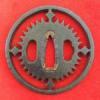
Fuchi-Kashira With Gemstones Or Glass
svarsh replied to svarsh's topic in General Nihonto Related Discussion
-
I would be most grateful if the members enlighten me regarding the material and technique, as well as help me with possible period and school attribution of the piece. Thank you. Sergei
-
-
Thank you John! I appreciate your help. s
-
-
I looked at the Kanayama examples at Sasano's 'silver book'. Out of 31 pieces, 13 (42%) are over 75 mm in diameter. One is even 82.2 mm. We may conclude that the size cannot be used as a reliable diagnostic symptom.
-
I am just wondering if anyone knows what's the motif of this tsuba? Advice regarding the school and time would be also very much appreciated. Size: 75 x 74 x 6 mm. Thanks. Sergei
-
Thank you all for responding. I have some reference books but they are currently in another location (or I am). I found a good resource at http://home.earthlink.net/~jggilbert/heianjo.htm: "Heianjo tsuba are considered to have developed from the Onin work in the early 1500s. They are normally of the suemon type, but the inlay is cut out from sheet metal rather than cast in a mold. Any surface detail on the brass is carved in. Production of Heianjo and Onin styles went on in parallel for some time before the Onin school died out. Some pieces are seen with a combination of cast and cut brass on the same plate. I am not convinced that there is any real distinction between the "school" of Onin makers and the "school" of Heianjo tsubako. As with Ko Tosho vs. Ko Katchushi guards, I believe that we are using these names as a convenient way to classify the work of professional tsuba makers according to various categories of style and age. To take it a step further, it's likely that "Katchushi" tsuba were being made side by side with "Onin" guards. The tsubako would add brass inlay according to the taste and budget of the customer. These can be considered decorated Katchushi, although the plate tends to be of softer iron, perhaps to make the inlay process easier." This was written by Jim Gilbert long time ago, and I wonder if there is any new research on the matter. Sergei
-
-
Sasano's "silver book" # 251 tsuba states that this is a Bridge and Iris (Yatsuhashi) design, however to me it looks as a Bridge and Butterfly. What do you think?



